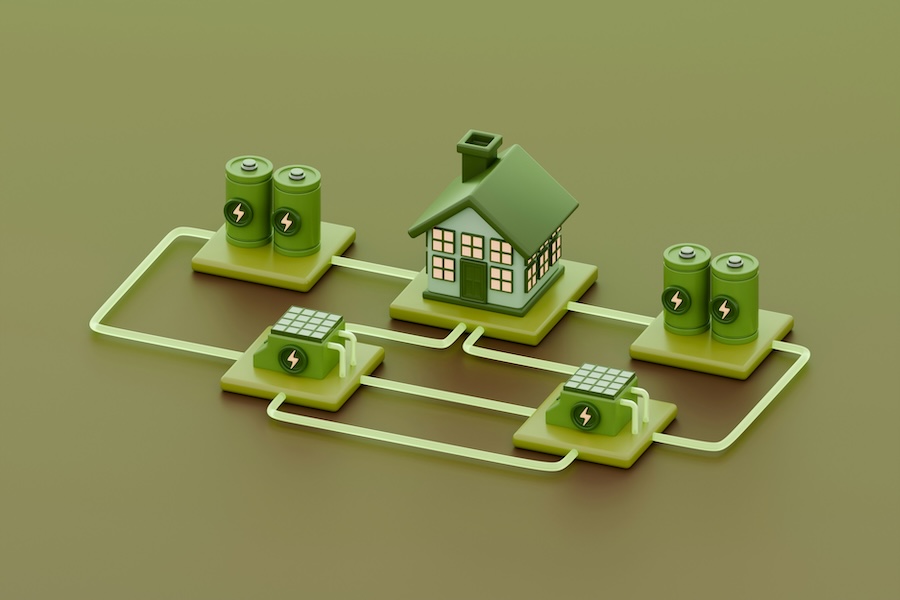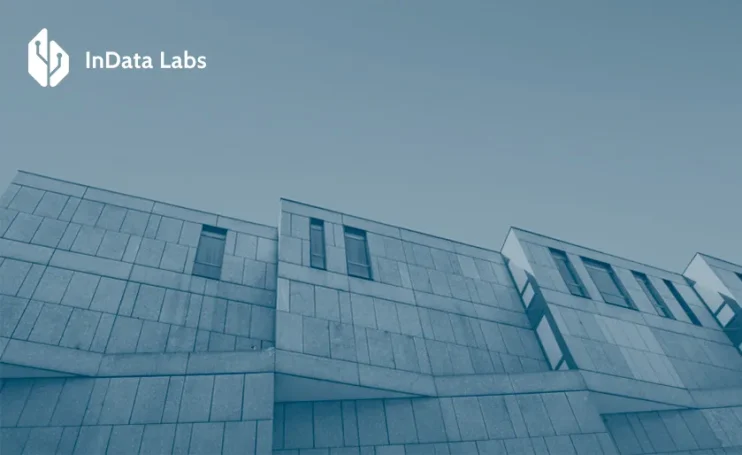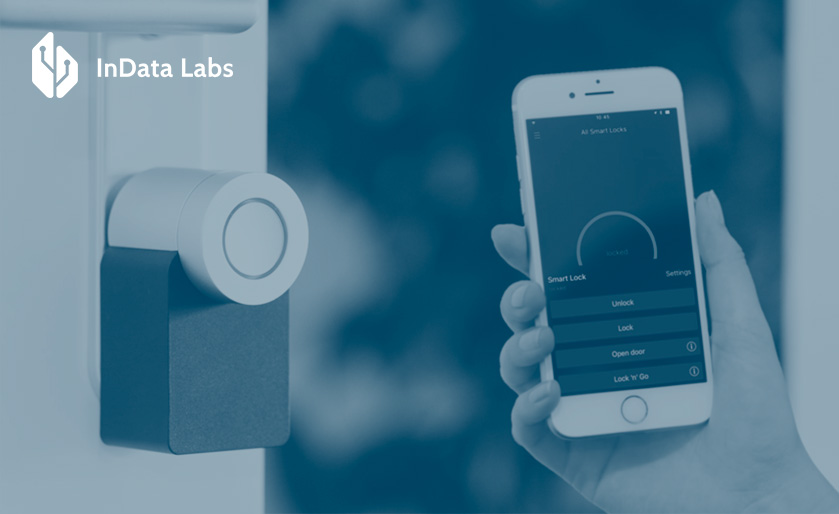Just like in many other sectors, developments in artificial intelligence are transforming the architecture industry, supporting designers, project managers and construction workers in optimizing essential processes. As many as 70% of architects are believed to be using or planning to adopt AI architecture design tools, laying the foundation for this emerging trend.
The use of AI in architectural design empowers architects to explore limitless possibilities in terms of ideation, optimization and resource utilization, enabling professionals to undertake increasingly imaginative projects. AI-powered solutions equally support architecture design optimization, supporting teams in realizing and completing projects much more efficiently.

Source: Unsplash
As the utilization of AI for architectural design becomes more widespread, increasingly interesting and innovative deployments of AI systems continue to emerge. The following article explores the foundation of these developments, current uses of AI in architecture design and potential future applications of AI-powered tools in the architectural industry.
The emerging role of AI in architecture design
The adoption of AI technologies across all business sectors has risen significantly in recent years, with professionals expecting AI to see an annual growth rate of almost 40% up to 2030. Artificial intelligence development teams are optimizing and adapting systems to meet new challenges almost daily, supporting the widespread, cross-industry adoption of AI tools.
According to data published in 2024, as many as 76% of modern Architecture, Engineering, Construction and Operations (AECO) organizations plan to increase their investments in AI over the next 3 years, exemplifying the growing prominence of AI in architecture and design.
The application of artificial intelligence in architectural design enables professionals to ideate and conceptualize projects that traditional workflows may not have supported, offering teams the ability to view design challenges from entirely new perspectives. To illustrate the potential of AI-based architecture design, here are some examples of emerging AI-imbued workflows.
Early-stage and pre-design planning

This efficient, data-backed process reduces the need for manual drafting, allowing architects to review logically sound designs and apply their own professional abilities at a consistently high level, potentially equally enhancing job satisfaction and engagement metrics. Over time, machine learning models can also adapt to the idiosyncrasies of individuals and architectural firms, further improving the total efficiency of early-stage and pre-design planning processes.
Optimizing schematic designs
AI and architectural design principles can also combine in the realm of schematic design optimization, enabling professionals to adapt basic construction designs to meet various specific needs. General design concepts built using high-quality data can be adjusted to meet requirements for different types of projects, supporting flexible and adaptive workflows.
Should the scope of a project change between planning and construction, logically airtight adjustments can be made in reference to relevant data. If a commercial office block becomes co-op housing, for example, foundational schematics can be automatically adjusted to ensure required infrastructural elements are optimized in line with regulations.

Source: Unsplash
Enhancing compliance management
Architectural designs must pass through multiple rounds of compliance checks to ensure proposed features and schematics meet regulatory requirements. Manually performing such procedures can be time-consuming and monotonous, drawing energy away from the design process and causing projects to stall, negatively impacting productivity across departments.
AI for architecture design can improve compliance management efficiency by automatically comparing proposed designs to pre-learned building codes and relevant regulations. GenAI development teams can implement custom solutions to help ensure potential complications are identified before designs are finalized, limiting the risk of roadblocks during construction.
Meeting sustainability requirements
Many modern construction projects prioritize sustainability and green building practices, with efforts to produce energy-efficient buildings rewarded through initiatives such as the LEED system and the Green Building Initiative. Optimizing designs with sustainability in mind can be surprisingly hard, with multiple changeable variables impacting overall energy-efficiency.
AI architecture design software can be deployed to analyze building plans, looking into both the raw schematics and expected use of proposed buildings to detect potential inefficiencies and suggest actionable improvements. Furthermore, AI-powered tools can suggest optimal placements and settings for HVAC infrastructure to help occupants pursue efficient practices.
Streamlining document management
AI tools have been frequently praised for their ability to automate repetitive tasks that often draw productivity away from more complex processes. Artificial intelligence in architecture design can be used for this purpose, helping professionals appropriately organize the vast number of permits, contracts and agreements associated with a typical architectural project.
AI tools can analyze stored documents and organize them based on preselected criteria, as well as draw out relevant information from building codes, design documents and other types of text-based documentation to be added to new permits and contracts. Utilizing AI software in this way can save architects a lot of time by providing easy access to required information.
How to use AI in architecture design
While the information covered above provides a brief overview of how AI and architecture design processes can synergize effectively, more detailed explanations of specific tasks may be required to help professionals actually utilize bespoke AI tools. Whether firms choose to work alongside AI consultants to develop custom applications, or prefer to explore existing, multi-faceted AI programs, below are some insights into how to use AI in architecture design.
Testing and development
Commercially available AI programs like Midjourney and Adobe Firefly are being effectively deployed by modern architects to broaden the scope of testing and development processes. Professionals can implant technical drawings and mock-up images of buildings in artificially generated environments to explore how real-world stimuli may interact with finished designs.

Source: Unsplash
With just a few text prompts, the environment surrounding proposed building designs can be adjusted to accurately portray real-world conditions, helping to highlight potential issues that may not have been noticeable in conceptual sketches. In this case, an in-house AI team can help architects bridge the gap between creative designs and real environmental conditions.
Parametric design ideation
The ability for artificial intelligence to approach creative ideation in a completely different way to the human mind opens up almost limitless possibilities in terms of imaginative conceptual designs. AI design architecture utilizes algorithmic processes to produce structures built from shapes that human teams may overlook, enabling them to create unique parametric designs.
Parameters can be introduced to ensure structural integrity, while still enabling AI systems to conceptualize buildings that exist outside the boundaries of traditional design practices. AI image generators can then produce snapshots of these designs based on foundational data so that teams can create preliminary 3D models and test sculptures for architects to review.
Smart city optimization
Authorities around the world are increasingly turning towards smart city developments to address issues caused by population growth and our impact on the environment. Central components of smart cities rely on real-time data collected by intelligent systems, typically via devices connected to the Internet-of-Things (IoT), impacting how buildings are designed.

Source: Unsplash
AI software for architectural design can help architects to optimize building plans in keeping with smart building IoT requirements, ensuring individual buildings and larger architectural ecosystems make provisions for IoT-based infrastructure. Data concerning placements for IoT building management and security infrastructure can be applied to schematics, with AI used to test plans to ensure maintenance and other vital processes can be safely performed.
Building Information Modeling (BIM)
BIM is a software-based process that enables architects to build modeled representations of a building’s functional and physical properties, typically to help stakeholders across different divisions make informed decisions about construction, maintenance and continuous building management processes. This data is contained in a digital Building Information Model file that acts as a shared knowledge resource for all parties involved in property management.
When integrated into BIM platforms, AI tools can be used to autonomously analyze models and provide real-time recommendations for building management operations. For example, AI can suggest and schedule predictive maintenance tasks, identify potential problems with construction processes and feed live data into BIM files to make sure models are up-to-date.
Scheduling and resource allocation
As architecture design artificial intelligence systems can simultaneously analyze data across multiple aspects of the construction process, these tools can provide invaluable assistance with regard to scheduling and resource allocation. AI can cross-reference inventory records, supply chain data and equipment availability to suggest optimal usage of all finite resources.

Popular AI software for architecture design
The number of AI tools available to architecture firms seems to be growing daily, with both general-purpose and industry-specific AI programs being used to bring innovative designs to life. Below are a few successful AI projects and software solutions that modern architects are currently leveraging to optimize key workflows and produce awe-inspiring building designs.
-
ARK Design
ARK is an intelligent and multifaceted schematic design platform built for architects and city planners, imbued with powerful generative AI tools capable of producing practical, compliant and realistic building plans. Users can input basic dimensions and relevant restrictions into their project’s home page, then ARK’s AI will build out compliant and realistic building plans.
This impressive AI for design architecture generates in-depth schematics for all manner of building types, enabling architects to adjust internal dimensions and floor plans with simple sliders to change the percentage of the space dedicated to different types of rooms and core facilities. ARK also produces data-backed estimates of project costs and potential revenue, supporting designers in mocking up and exploring the intricacies of full-scale developments.
-
Midjourney
Midjourney is an AI-powered image generator that’s seen widespread use across multiple industries in recent years. As far as architects are concerned, this platform provides a solid foundation for creative ideation tasks, enabling professionals to conceptualize interesting and innovative AI designs for architecture projects formed from concise, written text prompts.
Midjourney can be deployed to support architects in communicating complex contextual ideas to clients and collaborators, as well as to test the realistic workability of innovative structural designs. When implemented into the design process as a canvas for testing and creative ideation, image generation solutions such as this can help to keep projects moving.
-
ARCHITEChTURES
ARCHITEChTURES is a comprehensive city planning and architectural design platform that provides professionals with a large-scale suite of AI-powered solutions capable of assisting most aspects of design and construction planning. This dedicated artificial intelligence for architectural design analyzes data pertaining to budgets, regulations, client requirements and much more to provide a data-backed framework for schematics and technical drawings.
AI-generated floor plans and structural designs can be adjusted manually to help architects fine-tune foundational ideas to best meet client demands. Views can be adjusted to analyze models in both 2D and 3D environments, with full projects able to be saved and exported as high-quality BIM files that can be freely accessed and adjusted in wider BIM editing systems.
-
Adobe Firefly
Adobe Firefly is a relatively new text-to-image generator that comes as part of Adobe’s wider suite of creative software solutions, enabling this tool to be easily-adopted by any firms that already utilize tools like Photoshop or Premiere Pro. Architects can deploy this software to support creative ideation tasks, producing high-quality images of proposed design projects.
Architecture design using AI in this way explores projects and concepts that exist outside the confines of traditional design structures, enabling professionals to widen their horizons in terms of architectural possibilities. With many firms already utilizing solutions within Adobe’s ecosystem, the integration of Firefly into existing workflows may be straightforward for users.
-
Luma AI
Luma AI is an intelligent 3D scanning and modeling solution that’s perhaps best deployed as a creative ideation tool for renovation and remodeling projects. Users are able to scan real environments to create digital representations of 3D spaces which can then be manually or automatically edited to demonstrate the feasibility of proposed interior design developments.
Luma enables professionals to use AI in interior design and architecture design projects to quickly generate interactive digital versions of real-world spaces, supporting teams in realizing proposed concepts in a controlled environment. This can be particularly useful in renovation projects to help ensure creative designs meet spatial requirements and client demands, supporting teams in making the most efficient use of potentially limited resources.
Are human architects at risk from AI?
Some professionals in almost all industries exploring AI adoption have concerns that the use of artificial intelligence may negatively impact job prospects for highly-trained humans, but in most cases, this doesn’t seem to be the case. While 52% of surveyed architects believe AI has the potential to disrupt job security, the likely reality at present is a much different story.
Artificial intelligence architecture design software may be able to conceptualize imaginative ideas and process large amounts of data much more efficiently than humans, but modern tools lack the complex understanding of multi-faceted project management. This means they cannot entirely replace the need for experienced, qualified and personable human architects.

Source: Unsplash
A more realistic premise is that AI will be used for architecture design optimization, to free up more time and resources for highly-trained architects to explore greater, more fulfilling and more imaginative ideas. Provided firms work on dedicated AI strategies for business, make sure to implement tools ethically and invest in the upskilling and training of existing members of staff, AI-based architecture design tools should help architects to expand their capabilities.
Final thoughts on AI for architectural design
Almost 70% of architects that have used AI in architecture and design claim to be satisfied with the way current tools support early-stage processes, but only 30% believe AI solutions successfully support later developmental stages. This adds credence to the theory that AI in architecture and design will help professionals work towards the more complicated stages of projects faster and more efficiently, enabling them to spend more time on fulfilling processes.
When AI for architecture design is deployed to perform repetitive tasks, like AI chatbots used to simplify correspondence or AI text tools used to streamline file management, architects can spend more time on creative pursuits. These same processes can be enhanced via the use of AI image and model generators to support the optimization of architectural designs.



